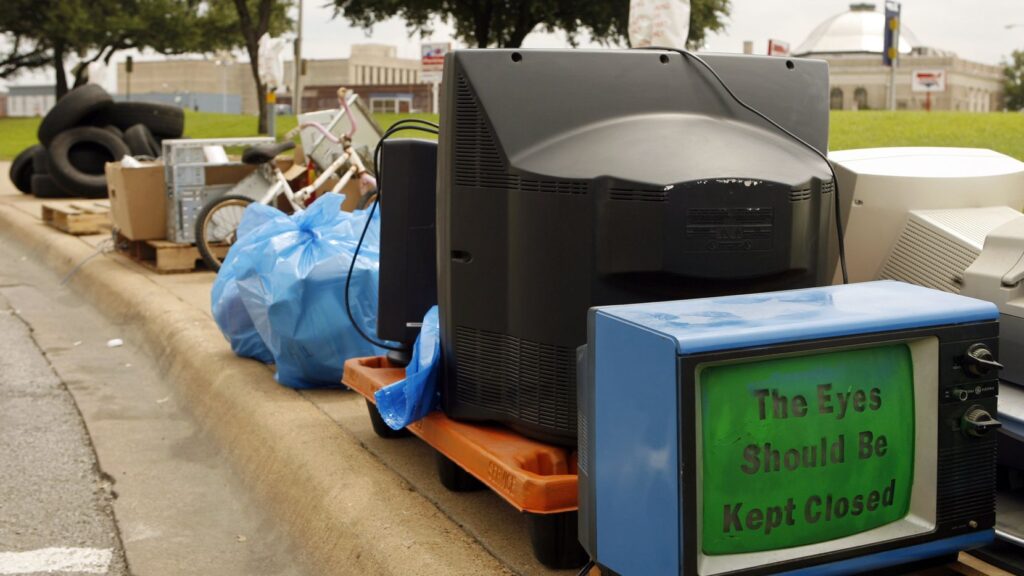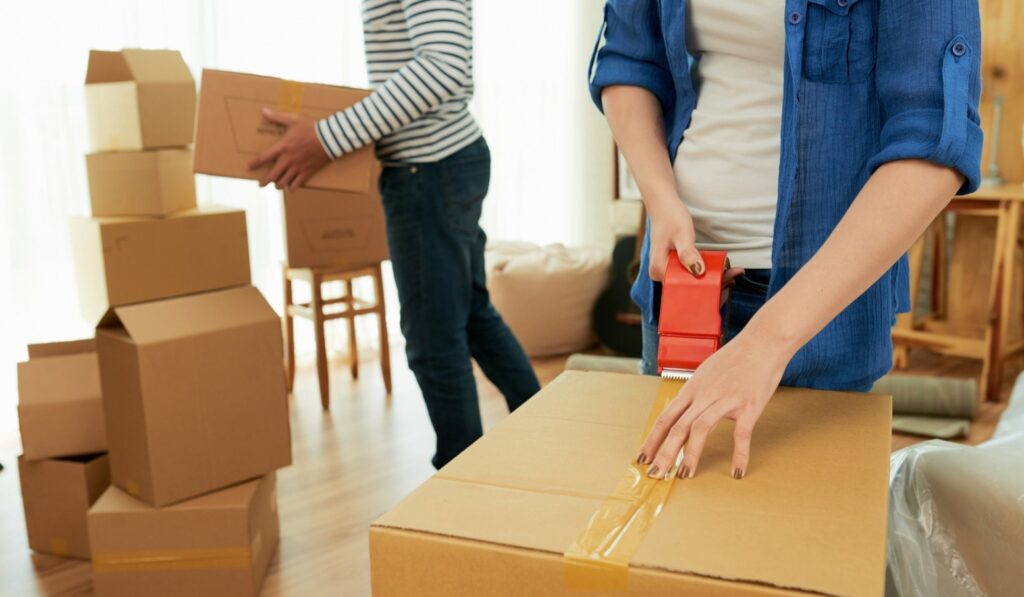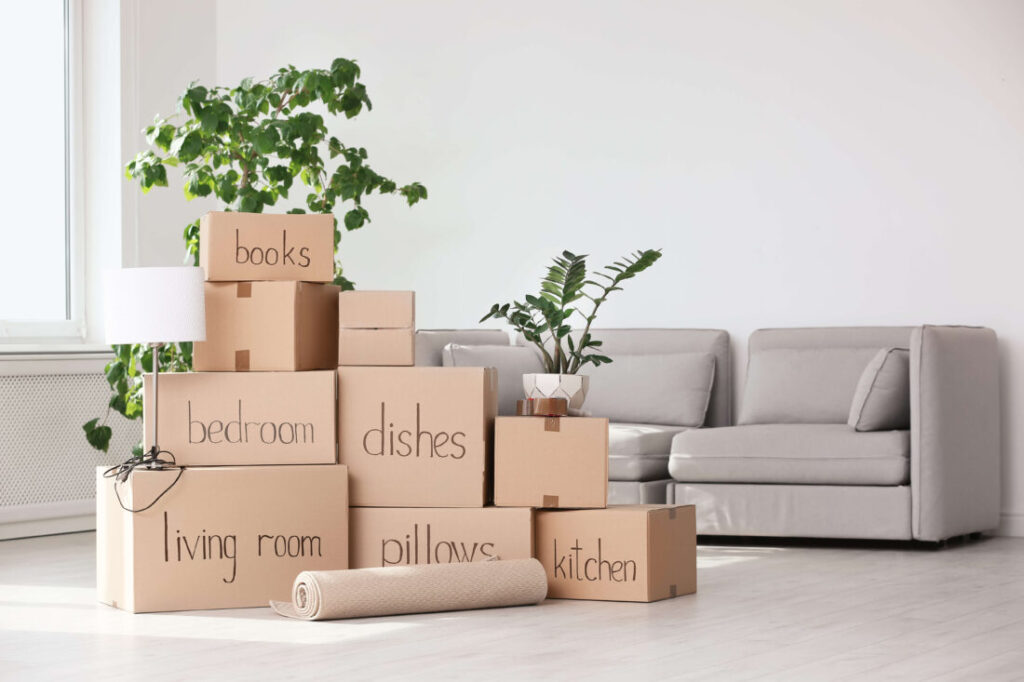
Take a look around your home, and you’re sure to count hundreds of different items. Do you know how you’d pack each one of them for a big move? Whether you’re relocating to a different neighborhood or moving across the country, it can be both challenging and time-consuming to organize your furniture, appliances and clothing.
It’s time to take the questions and stress out of moving day. We have the top packing tips for new homeowners, so you know how to get each one of your valuables to your new destination. With the help of these hacks, you’ll have more time and energy to spend on closing on your home and moving your loved ones. And you may not even need to pack everything. There will be some things you’ll need to purchase that didn’t come with the new place, like blinds and window coverings. To order your window blinds and coverings, check out Factory Direct Blinds.
1. Get Rid of Old Items

Packing your home can take weeks or even months. Save yourself time upfront by throwing away, selling or donating unwanted items. These may include outdated appliances, soiled furniture and outgrown clothing. Other things to remove from the packing list include broken lawn equipment, forgotten toys and decorative pieces that won’t fit into your new home’s décor scheme.
If you make any money, consider putting it toward a new home budget. Many homeowners will need fresh window coverings, extra light fixtures or additional furniture to accommodate your larger space. Instead of pinching pennies for a month or two, you can immediately adorn your house or apartment with your favorite artwork, a plush sofa or a comfortable set of patio furniture.
2. Grab Boxes Ahead of Time

When it’s time to move, you may be tempted to pack with old boxes. It’s smart to recycle, but they may be too weak or flimsy to carry all of your objects. To minimize the risk of an accident, consider purchasing moving boxes from your moving company or storage facility. These brand new vessels are durable, come in a variety of sizes and usually have designated spaces for clear labeling.
Visit the store a couple of weeks before you start packing. If you don’t see the sizes you need, you’ll have time to keep shopping. Another strategy is to use specialty boxes for valuables and recycled ones for lightweight and unbreakable goods. If you absolutely can’t allocate money to purchase boxes, start saving the ones you get from online purchases. You may also be able to supplement your inventory at your local grocery, plant nursery or drugstore. Next time you go shopping, ask a manager if they have boxes they are going to throw away in a dumpster. You’ll save yourself time asking friends and family—and you’ll also be helping the environment.
3. Decide If You Need Movers

If you’re making a small move, you may not need a professional moving company to haul your goods. In this case, you can use a pickup truck or rent a trailer instead. Homeowners with a ton of furniture or those with a large family may find that movers help save them time and stress. It’s also a good idea to use a moving professional if you’re relocating across the country.
Whatever reason you decide you need a mover, call them well in advance. The most popular and reputable companies may ask for up to a month’s notice to reserve your date and meet your moving specifications. Before you choose a company or sign a contract, review their terms carefully. Some businesses may require a deposit before they arrive or have guidelines for where to put your items on the morning of moving day. Don’t forget to keep valuables such as jewelry and cash with you. These items should be in the front seat of your car—not in the moving truck.
4. Pack in Advance

Remember when we said it takes weeks or months to fill your boxes? Don’t get yourself into a packing frenzy the week before your move. Start the process at least a month before you’re planning to relocate. Spend a few minutes each day placing non-essential items, such as décor accents or extra tableware, into clearly labeled boxes. Other items you can pack up ahead of time include outdoor furniture, holiday décor and toys your kids don’t use on a daily basis.
Aim to spend 20-30 minutes each day on your packing strategy. Once you’re seven to ten days out, you can begin storing items like blankets, bathroom accents and table lamps. If you have furniture or appliances you’re not currently using, feel free to put them inside your garage. This can make transport easier for your family or your moving company on the big moving day.
5. Label All Boxes

Moving is exhausting. When you get to your new home, the last thing you’ll want to do is sift through unnecessary boxes. As you pack, label every box properly. Write what room in your home the objects belong to, what’s inside and if the items are fragile. Should you need plates and cups for your first dinner, you’ll know exactly where to find them.
Labeling also helps your moving company. When they arrive at your new place, they can put everything in its right spot immediately. The quicker they work, the faster you can start relaxing in privacy. It’ll also make the unpacking process less tedious in the days to come.
6. Move Certain Items Separately

In most cases, you’ll want to fill your boxes with as many items as you can. This is without making it too heavy or overpacking it, of course. This strategy helps reduce waste and save space.
There are some objects you should pack separately. These include household chemicals, car batteries and fire extinguishers. Since they contain substances that can damage other goods and cause a chemical reaction, it’s best to put them in their own leakproof container.
7. Roll Your Clothing

Take your t-shirts and sweaters off their hangers and put them in storage boxes. Instead of folding them like you do at home, roll them up. When they’re rolled, you’ll find you can fit more clothing inside of one vessel. Do the same with the clothes you put in drawers, such as jeans, leggings and undergarments.
If you have dresses, coats or suits that you don’t want to fold, take care to protect them. Place them on their own hangers and then grab a large garbage bag. Use scissors to cut a hole in the top of the bag. The opening should be big enough to fit a hanger hook. Stack each set of hangers flat on top of each other and put them in the back of your vehicle. Transport them yourself instead of leaving it to the movers.
Pack Better for an Easier Move

It doesn’t matter whether you’re moving to the next neighborhood or several states away, you need to pack smart to make your move easier on your family. When you take the time to declutter, learn how to organize household items and label your moving boxes, you’ll transport and unpack without the added stress. The benefits of thoughtful packing include less risk of losing your items, streamlined experience with your moving company and a quicker start to your new life in your new home.
An organized packing strategy will also give you more time to devote to the activities that make your space feel comfortable and cozy, like cleaning your blinds, bedding and silverware before using them the first night. You’ll also be able to juggle your usual responsibilities without added fuss. While you’re packing using the tips above, don’t forget to purchase bubble wrap for valuables, write directions for how to reassemble furniture items and tell your loved ones ahead of time if you need their help on moving day. Before you know it, you’ll be enjoying your beautiful new space with your family.



